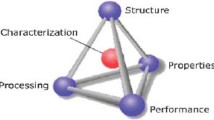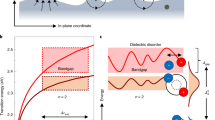
Access this book
Tax calculation will be finalised at checkout
Other ways to access
About this book
Similar content being viewed by others
Keywords
Table of contents (67 chapters)
-
Front Matter
-
Introduction
-
Chemistry and Physics of Disordered Materials
-
Front Matter
-
Editors and Affiliations
Bibliographic Information
Book Title: Disordered Materials
Book Subtitle: Science and Technology
Editors: David Adler, Brian B. Schwartz, Marvin Silver
Series Title: Institute for Amorphous Studies Series
DOI: https://doi.org/10.1007/978-1-4684-8745-9
Publisher: Springer New York, NY
-
eBook Packages: Springer Book Archive
Copyright Information: Plenum Press, New York 1991
eBook ISBN: 978-1-4684-8745-9Published: 06 December 2012
Edition Number: 1
Number of Pages: 410
Number of Illustrations: 268 b/w illustrations
Topics: Solid State Physics, Spectroscopy and Microscopy, Condensed Matter Physics, Crystallography and Scattering Methods, Characterization and Evaluation of Materials



